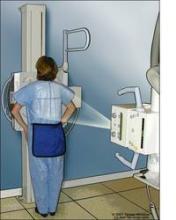The Food and Drug Administration is recommending that all patients with implanted cardioverter defibrillators or cardiac resynchronization therapy defibrillators with Riata or Riata ST leads get an x-ray to check for abnormalities. St. Jude Medical voluntarily recalled those leads in November 2011 after reports of insulation failure or premature erosion of the insulation surrounding the electrical conductor wires. While the company stopped selling the Riata leads in 2010, they estimate that 79,000 leads are still implanted in patients across the country.
The leads, which connect the defibrillator to the heart to monitor its rhythms, are typically made with layers of insulation around them to protect the electrical wiring within the lead. However, insulation failure can cause inappropriate impulses, no impulses at all, or life-threatening abnormal heart beats. The FDA is ordering St. Jude Medical to conduct 3-year postmarket surveillance studies to learn more about what patients and physicians should expect.
"The majority of Riata and Riata ST leads, including those that show signs of electrical conductor migration or externalization, continue to function normally and provide life-saving support for patients," said Dr. Jeffrey Shuren, director of FDA’s Center for Devices and Radiology Health, in a statement. However, "The agency does not have enough information to determine the frequency and timing of insulation failure in these leads; therefore, the postmarket surveillance studies will ensure that health care professionals and patients get the data they need to better guide clinical management decisions."
The postmarket studies will address issues including the timing of lead insulation failure, serious side effects associated with treatment for malfunctioning leads, and whether the insulation failure can be detected with an x-ray.
St. Jude Medical has also voluntarily recalled two other sets of leads, QuickSite LV CRT leads and QuickFlex LV CRT leads, because of insulation abrasion. CRT leads are battery-powered units implanted in patients with heart failure to keep the left and right sides of the heart beating in unison. Like the Riata leads, CRT leads are insulated to monitor health rhythm and deliver electrical impulses.


